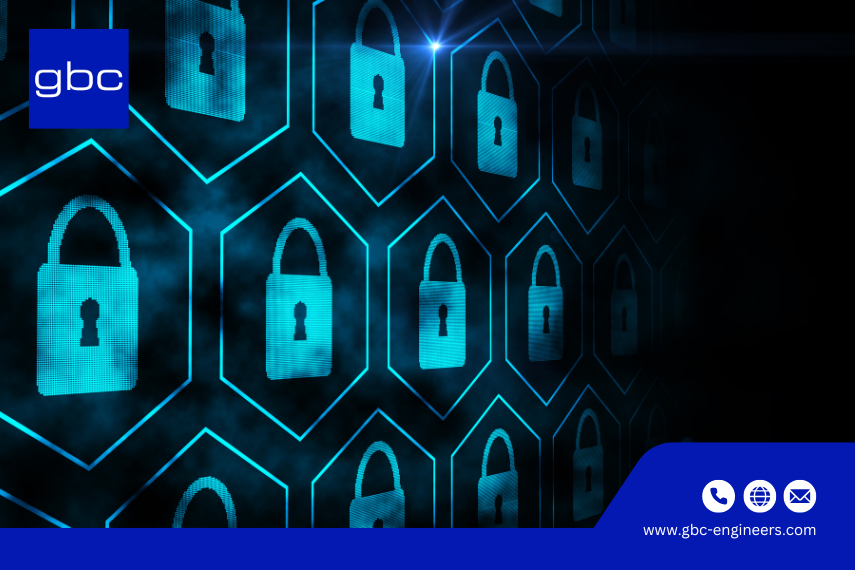Designing a data center is a complex endeavor that requires meticulous planning and consideration of various factors. From capacity planning to sustainability, each element plays a crucial role in ensuring the efficiency, scalability, and reliability of the facility. This guide of gbc engineers delves into the essential data center design criteria, providing insights to help you build a robust and future-proof infrastructure.
Capacity Planning and Scalability in Data Center Design
Assessing Current and Future Capacity Needs
Effective capacity planning is fundamental to data center design. It involves evaluating current workloads and anticipating future growth in data volume and processing requirements. Key considerations include:
- Current Workloads: Analyze existing applications, server performance, storage needs, and processing demands to understand the baseline of the system.
- Growth Projections: Estimate future needs based on business expansion plans, emerging technologies, and the anticipated demand for more robust server capabilities and storage systems.
- Redundancy Requirements: Determine the level of redundancy necessary to ensure reliability and high availability, minimizing downtime for critical business operations.
Implementing a top-down approach, which aligns capacity design with long-term business objectives, and a bottom-up approach, focusing on existing systems and infrastructure, can provide a comprehensive view of capacity needs and drive a more sustainable, flexible design.
Importance of Scalable Infrastructure
Scalability ensures that a data center infrastructure can efficiently adapt to increasing demands without significant overhauls or disruptions. Incorporating scalable infrastructure into your data center design allows for future growth while minimizing system downtime and business interruptions.
By aligning with design standards, businesses can ensure long-term reliability and sustainability. Strategies to enhance scalability and sustainability include:
- Modular Design: Utilize prefabricated, easily deployable modules that can be added as needed, ensuring a sustainable and adaptable system for future capacity needs.
- Virtualization: Implement virtualization technologies to optimize resource utilization and manage workloads more efficiently, maximizing the lifespan of your servers and reducing energy consumption for a greener system.
- Flexible Architectures: Design systems that can accommodate new technologies, such as artificial intelligence, and handle higher volumes of data as business requirements evolve. This ensures reliability and capacity for future demands.
Incorporating these principles into data center design allows for seamless growth, operational efficiency, and minimal disruptions, ensuring your infrastructure is both reliable and sustainable.
Read More: What is Data Center Design? 3 Critical Considerations for 2025 - gbc engineers
How to Choose the Best Location for a Data Center
Site Selection: Key Factors to Consider
The physical location of a data center plays a pivotal role in its performance and operational costs. Adhering to standards and best practices when selecting a site ensures the long-term reliability and efficiency of the facility. Critical factors to consider include:
- Power Availability and Cost: Ensure access to reliable and affordable power sources, considering backup systems and renewable energy options.
- Network Connectivity: Evaluate the presence of multiple internet service providers and robust fiber optic infrastructure to guarantee high-bandwidth, low-latency connections.
- Environmental and Regulatory Considerations: Assess the risk of natural disasters, local climate conditions, and compliance with environmental regulations.

Core Infrastructure and Architecture of Modern Data Centers
Centralized vs. Distributed Architectures
Choosing between centralized and distributed architectures depends on factors such as:
- Disaster Recovery: Distributed systems can enhance resilience by spreading resources across multiple locations.
- Data Redundancy: Centralized systems may simplify redundancy strategies but can pose higher risks in the event of failures.
- Proximity to End-Users: Distributed architectures can reduce latency by placing resources closer to users.
On-Premises vs. Cloud-Based Infrastructure
Organizations must decide whether to host infrastructure on-premises or leverage cloud services. Considerations include:
- Cost: Cloud solutions often offer lower upfront costs but may have higher long-term expenses.
- Security and Compliance: On-premises systems provide greater control, which may be necessary for certain regulatory requirements.
- Scalability: Cloud services typically offer greater flexibility to scale resources up or down as needed.
Modular vs. Traditional Design
Modular designs use standardized, prefabricated components, offering benefits such as:
- Flexibility: Easily reconfigure or expand the data center.
- Speed: Faster deployment compared to traditional construction.
- Cost-Effectiveness: Potentially lower construction and operational costs.
Traditional designs, while potentially more customizable, may involve longer build times and higher expenses.
Efficient Power and Cooling Systems
Implementing efficient power distribution and cooling systems is critical for maintaining optimal operating conditions, ensuring efficient data processing, and supporting a resilient data center infrastructure. Key strategies include:
Power Usage Effectiveness (PUE)
- Measure and Optimize: Target a low PUE (Power Usage Effectiveness) ratio to minimize energy waste and enhance overall energy efficiency across all systems.
- Real-Time Monitoring: Use smart meters and analytics to track power consumption in real time, enabling quick response to inefficiencies.
Renewable Energy Integration
- Sustainable Power Sources: Incorporate solar, wind, or hydroelectric power to reduce reliance on fossil fuels and lower the data center’s carbon footprint.
- On-Site Generation: Implement photovoltaic systems or microgrids to improve energy independence and sustainability.
Advanced Cooling and Air Conditioning Techniques
- Liquid Cooling: Deploy liquid-cooled racks to more effectively manage heat generated by high-density servers.
- Free Cooling: Use external cool air or evaporative cooling when climatic conditions allow, reducing the load on traditional air conditioning units.
- Hot/Cold Aisle Containment: Separate hot and cold airflow to prevent mixing and increase cooling system efficiency.
Read More: The Basics of Electrical Data Center Design in 2025 - gbc engineers
Data Center Security and Regulatory Compliance Essentials
Physical Security Measures
Protecting the physical infrastructure involves:
- Access Control Systems: Implement biometric scanners and security checkpoints.
- Surveillance: Deploy CCTV cameras and monitoring systems.
- Perimeter Security: Use fencing and security personnel to deter unauthorized access.
Cybersecurity Features
Safeguarding digital assets requires:
- Firewalls and Intrusion Detection Systems: Monitor and block malicious activities.
- Encryption: Protect data in transit and at rest.
- Network Segmentation: Isolate critical systems to prevent lateral movement in case of breaches.
Regulatory Compliance
Ensure adherence to relevant regulations such as:
- HIPAA: For healthcare data protection.
- PCI DSS: For payment card information security.
- GDPR: For data privacy in the European Union.
Designing systems with compliance in mind can prevent legal issues and build customer trust.
Disaster Recovery and Business Continuity
Implementing robust disaster recovery plans includes:
- Redundant Systems: Duplicate critical components to maintain operations during failures.
- Failover Protocols: Automatically switch to backup systems when primary ones fail.
- Regular Testing: Conduct drills to ensure preparedness for various scenarios.
Financial Planning: Managing Costs and Maximizing ROI
Capital and Operational Expenditures
Building and operating a data center involves significant capital expenditures (CapEx) and ongoing operational expenditures (OpEx). Costs encompass construction, equipment procurement, energy consumption, maintenance, and staffing.
Total Cost of Ownership (TCO) Analysis
A comprehensive TCO analysis evaluates all costs associated with a data center over its lifecycle. This includes initial investments, operational expenses, and potential savings from energy-efficient technologies. Understanding TCO aids in making informed financial decisions.

Regulatory Trends and Industry Certifications
Global Compliance Frameworks
With increasing scrutiny from governments and stakeholders, modern data center infrastructure must adhere to comprehensive international and national standards. These ensure secure, efficient, and compliant operations while minimizing environmental impact. Key frameworks include ISO/IEC 27001 for information security, ISO 50001 for energy management, and local data sovereignty laws like the EU’s GDPR and Singapore’s PDPA.
Green Certifications
With sustainability becoming a competitive differentiator, certifications such as LEED (Leadership in Energy and Environmental Design), BREEAM, and ENERGY STAR are increasingly sought after. These certifications reflect a commitment to environmental performance, energy efficiency, and responsible resource use.
Read More: Best Practices Guide for Energy-Efficient Data Center Design 2025 - gbc engineers
Strategic Partnerships: Collaborating for Success
Vendor Selection and Collaboration
Choosing the right vendors and partners is crucial for data center success. Evaluating vendors based on expertise, product offerings, support services, and alignment with organizational goals ensures a collaborative and effective partnership.
Ecosystem Integration
Engaging with a broader ecosystem of partners including cloud service providers, telecom operators, equipment manufacturers, and sustainability consultants—helps data centers stay adaptable and innovative. These collaborations foster better interoperability, ensure access to cutting-edge technologies, and strengthen supply chains, which are particularly important in today’s rapidly evolving digital landscape.
A strong ecosystem also supports hybrid and multi-cloud strategies, which are becoming increasingly popular as companies seek to optimize their IT infrastructure by balancing on-premises control with the flexibility and scalability of cloud platforms.
Disaster Recovery and Business Continuity Planning
Redundancy and Backup Systems
Designing for resilience is a non-negotiable aspect of data center architecture. N+1, 2N, and 2N+1 redundancy configurations ensure continued operation even if a critical component fails. Redundant power supplies, backup generators, uninterruptible power supplies (UPS), and data replication are essential components for disaster recovery.
Geographic Redundancy
Geographic redundancy involves distributing workloads across multiple data centers in different locations. This minimizes the risk of a single point of failure and ensures continuity during regional disruptions caused by natural disasters, outages, or geopolitical issues.
Crisis Management Protocols
An effective business continuity plan includes comprehensive incident response strategies, staff training, and regular simulations. The faster a data center can identify, isolate, and recover from an incident, the less disruption it causes to business operations.
Conclusion
Designing a data center involves more than just choosing the right hardware, it's about strategic planning across capacity, location, infrastructure, security, sustainability, and cost. By understanding these data center design criteria, businesses can build data centers that are resilient, efficient, and future-ready.
Whether you're creating a hyperscale facility or a modular edge deployment, prioritizing sustainability and scalability will ensure your infrastructure supports innovation for years to come.
Need help designing your next data center project? Let our structural engineering experts at gbc engineers help bring your vision to life, from structural design and LCA analysis to sustainability consulting and BIM implementation.